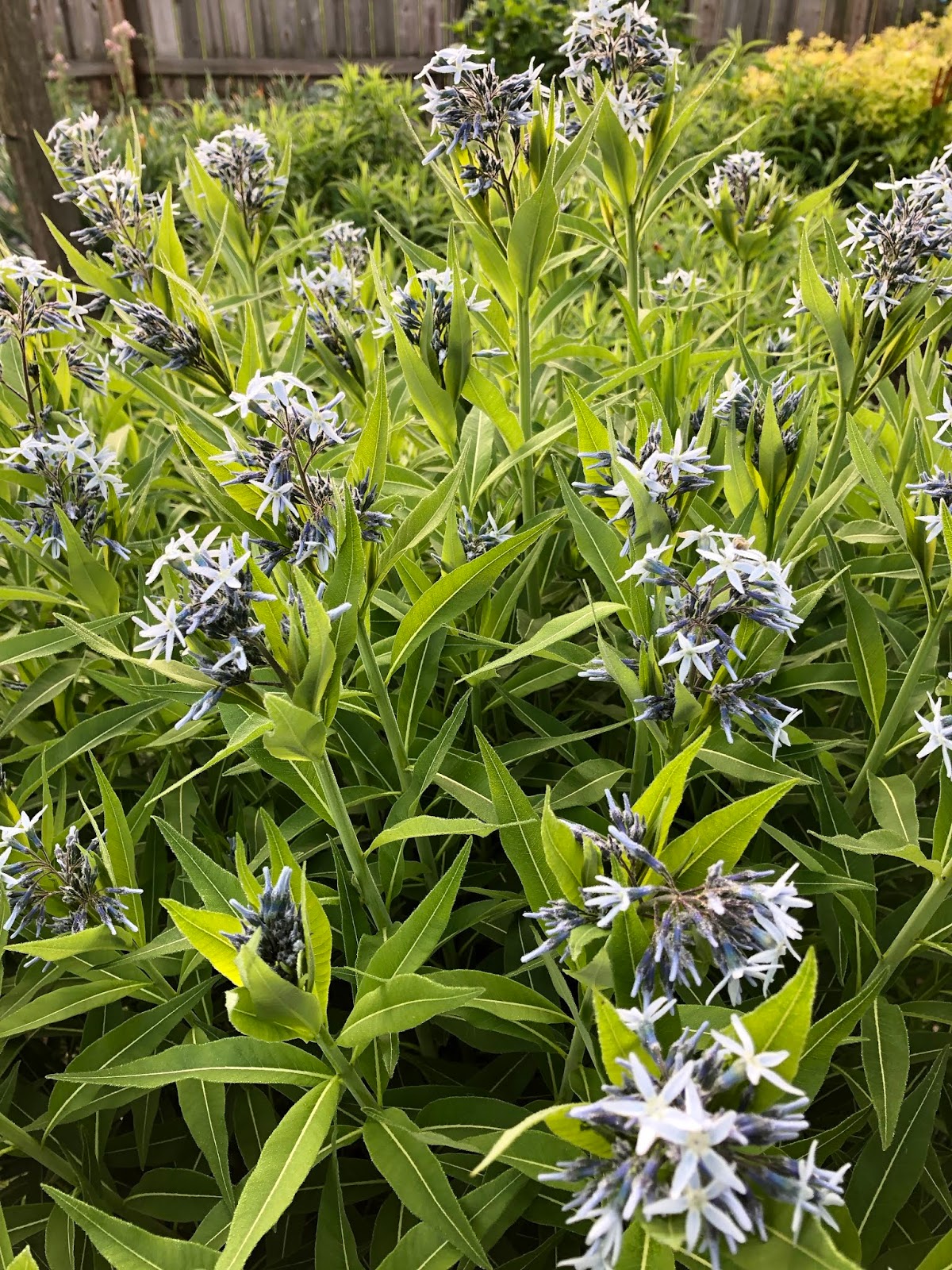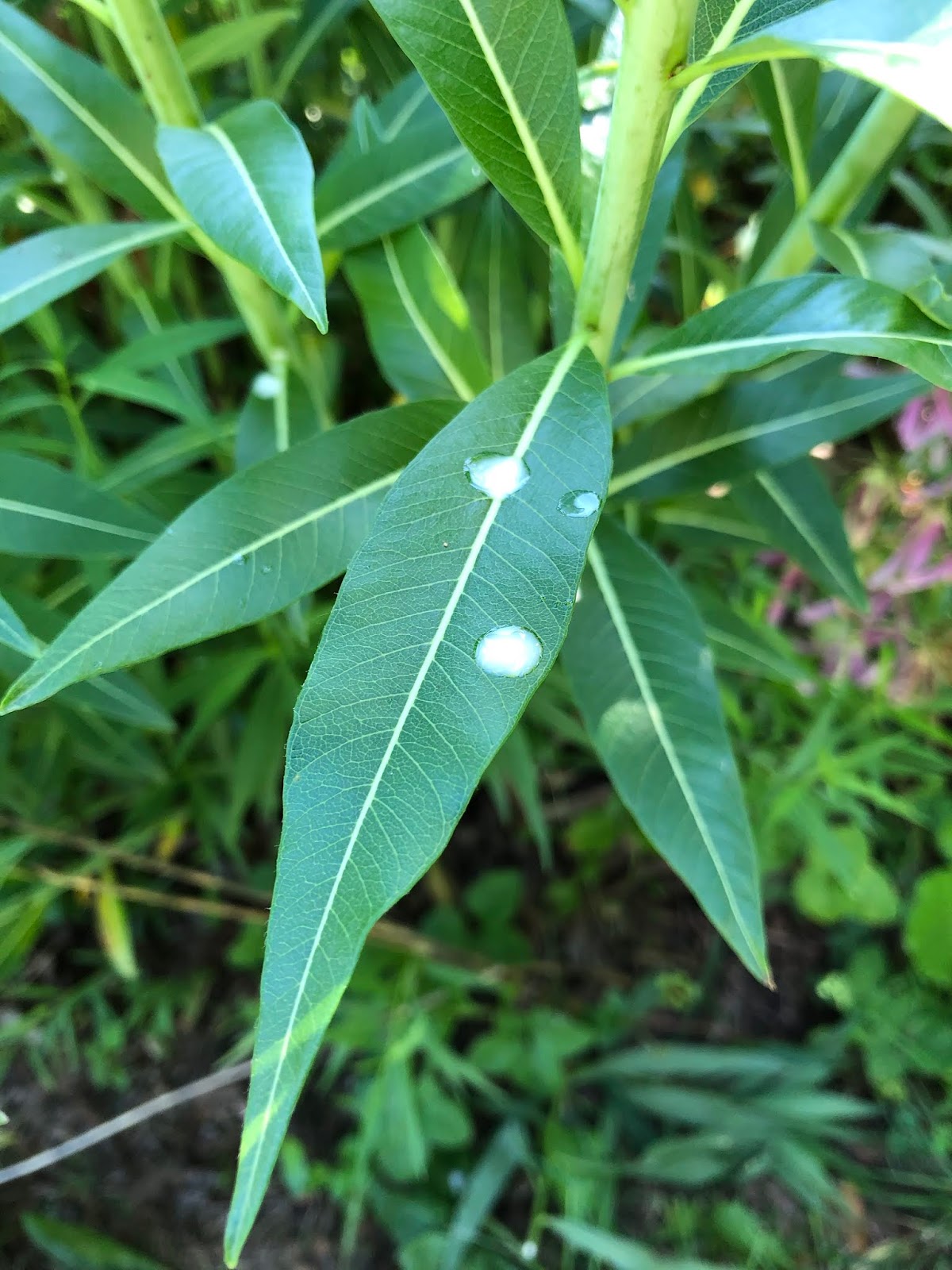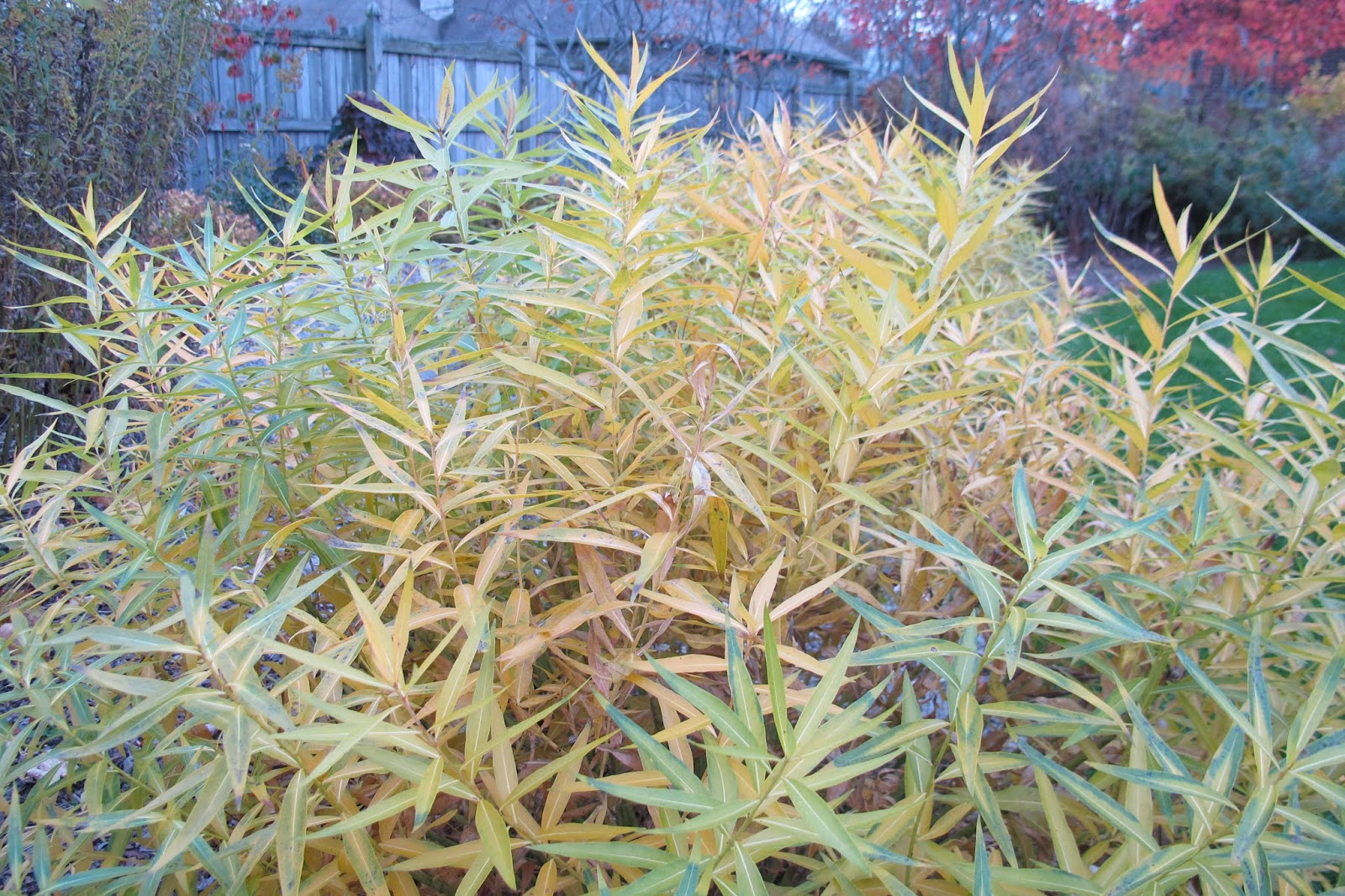
There are some garden tasks that require you to prepare yourself physically and mentally, to gird your loins. One of those tasks in my garden is cutting back Amsonia tabernaemontana, Bluestar, after it has flowered and formed seed pods.
Those seed pods! They must be removed at any cost or my entire garden would be Amsonia. I do not want those seeds to ripen, fall to the ground, and germinate.
The Amsonia seedlings, which don’t look all that big, have roots that rival those of nearly any other plant I can think of.
Most seeds anchor themselves with a bit of root before sending up a shoot. Amsonia must spend 99% of its energy on developing a strong root before using its last 1% to send up a shoot.
You can attempt to pull them out. Just try. You won’t be able to pull it out. It will laugh at you. It will stand there collecting on bets it made with other plants around it. “How much you wanna bet she can’t pull me out?”
Which is why once a year I gird my loins and cut back all the Amsonia—three stands of it—and in the process, remove the seeds.
Why must I gird my loins for the simple task of cutting back Amsonia?
Because of the white, sticky sap.

It’s like white glue. It is sticky. And messy. And sticky. And will get all over you and whatever pruners you use to cut back the stems.
I gird my loins by donning a long-sleeve T-shirt, a pair of long pants, a baseball cap, and gardening gloves, and grabbing some spare pruners. I choose only those items that I don’t care about getting Amsonia glue sap on. Because it is sticky and it will stain.
I generally make “cutting back the Amsonia” the last gardening task of the day because after I’m done, my clothes are covered with sticky glue sap. I then go inside and put those clothes directly in the washer and clean myself up. If I am lucky and was well girded, I don’t end up with the glues sap on my skin.
Amsonia isn’t for the timid gardener. It can become a massive clump over time. A clump that is almost impossible to dig out without jackhammers. Therefore, it must be cut back every year to prevent it from self-sowing its way to garden domination, one seedling at a time. I admit after being cut back, Amsonia doesn’t look all that great, but over the course of a few weeks, it will sprout some new shoots and begin to look a little less hacked-back
So why plant Amsonia?
Because it has lovely blue flowers in the spring and is one of the only perennial flowers to have actual fall foliage color.

And it is a native wildflower.
Speaking of wildflowers, this is Wildflower Wednesday! Hop on over to Clay and Limestone to see who else is writing about wildflowers today.
Then if you have Amsonia in your garden, gird your loins and cut that thing back so it doesn’t self-sow all over the garden!


I never noticed the white substance when cutting it back, but, then, I never cut it back;) Happy WW. gail
I had 2 plants at my previous residence. I loved them. I agree with Gail. I never noticed the sap, because I never cut it back. Thanks for the heads up, though!
I think I won't try this one, unless I don't cut it back.
Pretty blooms!
I am adding the Beautyberry that is blooming here in northeast Mississippi to Gail's Wildflower Wednesday Linky.
Have a wonderful weekend!
Makes me wonder how the subsequent owner of. My former arden has dealt with the amsonia ia I left behind. Oh well, she cut down all of my crab apples, so I have no pity for her.